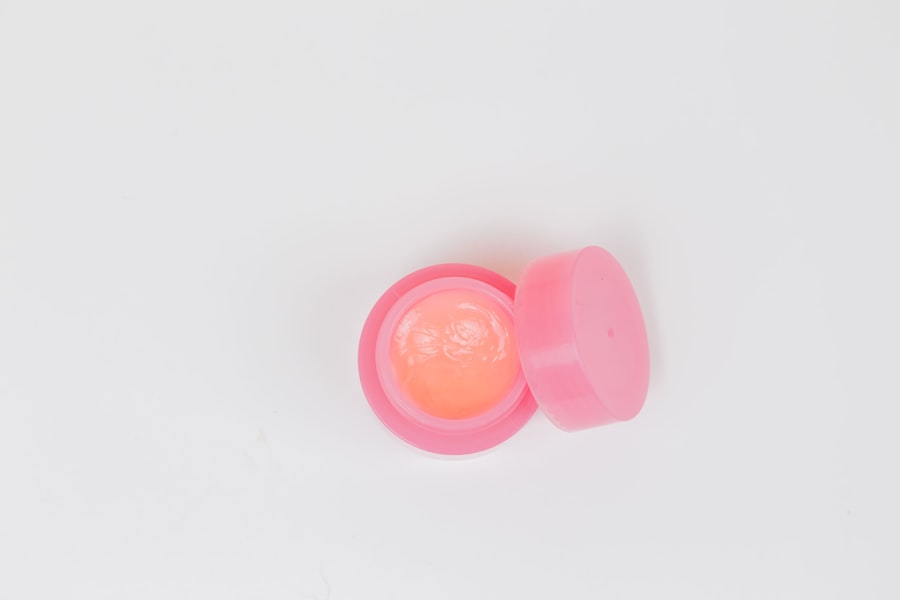Laser hair removal is a popular cosmetic procedure that utilizes concentrated beams of light to target and eliminate unwanted hair. The technology behind this method is based on the principle of selective photothermolysis, where the laser light is absorbed by the pigment in the hair follicles. This absorption generates heat, which effectively damages the follicles and inhibits future hair growth.
As you consider this option, it’s essential to understand how the procedure works, its benefits, and what you can expect during and after treatment. The process typically begins with a consultation, where a trained professional assesses your skin type, hair color, and overall suitability for the treatment. During the procedure, a handheld laser device is moved over the treatment area, delivering pulses of light that may cause a mild sensation akin to a rubber band snapping against your skin.
While some individuals may experience discomfort, many find it tolerable. The procedure is relatively quick, often taking only a few minutes for small areas and up to an hour for larger ones. Understanding these aspects can help you feel more prepared and informed as you embark on your laser hair removal journey.
Key Takeaways
- Laser hair removal targets hair follicles to reduce hair growth
- Factors affecting longevity include hair color, skin type, and hormonal changes
- Results can last for several months to years, with touch-up sessions as needed
- Tips for prolonging results include avoiding sun exposure and following aftercare instructions
- Maintenance sessions may be needed every 6-12 months for optimal results
- Laser hair removal offers longer-lasting results compared to shaving or waxing
- Potential side effects include redness, swelling, and changes in skin pigmentation
- Making informed decisions and following aftercare instructions can lead to long-lasting results
Factors Affecting Longevity of Laser Hair Removal
The longevity of laser hair removal results can vary significantly from person to person, influenced by several key factors. One of the most critical elements is your hair type and color. Darker hair tends to respond better to laser treatments because the contrast between the hair pigment and skin tone allows for more effective targeting by the laser.
Conversely, lighter hair colors, such as blonde or gray, may not absorb the laser light as effectively, potentially leading to less satisfactory results. Another important factor is your skin type. Individuals with lighter skin tones generally experience better outcomes because the laser can differentiate more easily between the hair and skin.
Additionally, hormonal changes can impact hair growth cycles; for instance, conditions like polycystic ovary syndrome (PCOS) can lead to increased hair growth in certain areas. Your overall health and lifestyle choices, such as diet and stress levels, can also play a role in how long the results last. By understanding these factors, you can set realistic expectations for your laser hair removal experience.
Duration of Results: What to Expect

After undergoing laser hair removal, you may wonder how long the results will last. Generally, many individuals experience a significant reduction in hair growth after a series of treatments. While some may enjoy permanent hair removal in certain areas, others might find that maintenance sessions are necessary to keep unwanted hair at bay.
Typically, patients can expect to see a reduction in hair density and thickness after each session, with many reporting that regrowth is finer and less noticeable. The duration of results can also depend on the number of sessions completed and adherence to the recommended treatment schedule. Most practitioners suggest a series of 6 to 8 sessions spaced several weeks apart for optimal results.
After completing this initial course of treatment, many individuals find that they only need touch-up sessions once or twice a year to maintain their desired level of smoothness. Understanding what to expect in terms of duration can help you plan accordingly and manage your expectations throughout the process.
Tips for Prolonging the Effects of Laser Hair Removal
| Tips for Prolonging the Effects of Laser Hair Removal |
|---|
| 1. Avoid sun exposure for at least 2 weeks before and after treatment. |
| 2. Use sunscreen with a high SPF to protect the treated area from UV rays. |
| 3. Avoid hot showers, saunas, and steam rooms for 24-48 hours after treatment. |
| 4. Do not wax or pluck hairs in between laser hair removal sessions. |
| 5. Moisturize the treated area regularly to keep the skin hydrated. |
| 6. Follow the recommended treatment schedule for best results. |
To maximize the longevity of your laser hair removal results, there are several proactive steps you can take. First and foremost, following your practitioner’s aftercare instructions is crucial. This may include avoiding sun exposure, refraining from using certain skincare products, and steering clear of activities that could irritate the treated area for a few days post-treatment.
By adhering to these guidelines, you can help ensure that your skin heals properly and that the results last longer. In addition to following aftercare advice, maintaining a healthy lifestyle can also contribute to prolonging your results. Staying hydrated, eating a balanced diet rich in vitamins and minerals, and managing stress levels can all positively impact your skin and hair growth cycles.
Regular exercise can improve circulation and promote overall skin health, which may enhance the effectiveness of your treatments. By taking these steps, you empower yourself to achieve the best possible outcomes from your laser hair removal experience.
Maintenance Sessions: How Often Should You Go?
Once you have completed your initial series of laser hair removal sessions, you may be curious about how often you should return for maintenance treatments. The frequency of these sessions can vary based on individual factors such as hair growth patterns and hormonal influences. Generally speaking, many practitioners recommend scheduling maintenance sessions every 6 to 12 months after completing the initial treatment course.
During these maintenance visits, your practitioner will assess your progress and determine if any additional treatments are necessary. Some individuals may find that they require fewer sessions over time as their hair growth diminishes significantly. Others might notice occasional regrowth in specific areas that may need attention.
By staying in touch with your practitioner and following their recommendations, you can ensure that you maintain optimal results while minimizing any unwanted hair regrowth.
Comparing Longevity with Other Hair Removal Methods

When considering laser hair removal, it’s essential to compare its longevity with other hair removal methods available today. Traditional methods such as shaving or waxing provide temporary solutions; shaving typically requires daily or weekly upkeep while waxing may last several weeks but often leads to regrowth that feels coarse or stubbly. In contrast, laser hair removal offers a more long-term solution by targeting the root of the problem—hair follicles—leading to a more permanent reduction in hair growth.
Another popular method is electrolysis, which involves using an electric current to destroy individual hair follicles. While electrolysis is effective for permanent hair removal, it can be time-consuming and may require more sessions than laser treatments due to its methodical approach. In terms of longevity and convenience, many individuals find that laser hair removal strikes an ideal balance between effectiveness and ease of maintenance compared to these other methods.
Potential Side Effects and Risks
As with any cosmetic procedure, it’s important to be aware of potential side effects and risks associated with laser hair removal.
These symptoms typically subside within a few hours to a couple of days post-treatment.
In rare cases, more serious side effects can occur, including changes in skin pigmentation or scarring. Individuals with darker skin tones may be at a higher risk for pigmentation changes if not treated by an experienced practitioner who understands how to adjust settings appropriately for different skin types. To minimize risks, it’s crucial to choose a qualified provider who uses FDA-approved equipment and follows safety protocols diligently.
By being informed about potential side effects and selecting a reputable practitioner, you can make educated decisions regarding your laser hair removal journey.
Making Informed Decisions for Long-Lasting Results
In conclusion, understanding laser hair removal is essential for making informed decisions about your personal grooming routine. By familiarizing yourself with how the procedure works, what factors influence its longevity, and how to maintain results effectively, you empower yourself to achieve lasting smoothness without the hassle of traditional methods. Remember that individual experiences may vary based on personal factors such as skin type and hormonal influences.
As you embark on this journey toward smoother skin, consider consulting with a qualified practitioner who can guide you through each step of the process. With proper care and attention to maintenance sessions, you can enjoy long-lasting results that enhance your confidence and simplify your beauty routine. Ultimately, making informed choices will lead you toward achieving the best possible outcomes from your laser hair removal experience.
If you are curious about how long the results of laser hair removal last, you may want to check out the blog section of In Laser Hair Removal website. They provide informative articles on various topics related to laser hair removal, including tips on how to make the results last longer. This article may offer valuable insights into maintaining smooth and hair-free skin after undergoing laser hair removal treatments.
FAQs
What is laser hair removal?
Laser hair removal is a cosmetic procedure that uses a concentrated beam of light (laser) to remove unwanted hair. The light energy is converted to heat, which damages the hair follicles and inhibits future hair growth.
How long does laser hair removal last?
Laser hair removal can provide long-lasting results. Many people experience a significant reduction in hair growth after a series of treatments. However, it’s important to note that results can vary depending on individual factors such as hair color, skin type, and hormonal changes.
How many sessions are typically needed for laser hair removal to be effective?
The number of sessions needed for effective laser hair removal varies from person to person. On average, most people require 6-8 sessions spaced several weeks apart to achieve optimal results. Some individuals may need more or fewer sessions depending on their specific hair and skin characteristics.
Is laser hair removal permanent?
Laser hair removal can lead to long-term hair reduction, but it is not always permanent. Some people may experience regrowth over time, although the new hair is often finer and lighter in color. Periodic maintenance sessions may be necessary to sustain the results.
Are there any risks or side effects associated with laser hair removal?
While laser hair removal is generally considered safe, some potential risks and side effects may include skin irritation, redness, swelling, and changes in skin pigmentation. It’s important to consult with a qualified and experienced practitioner to minimize the risk of adverse effects.




